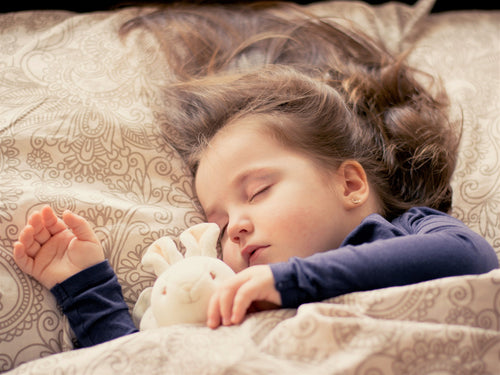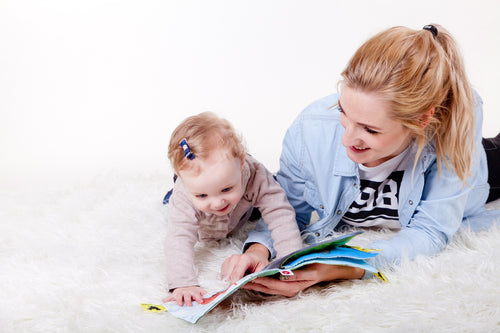A positive and consistent bedtime routine is an essential cornerstone of a child’s healthy sleep habits. It not only helps your child relax and prepare for a good night’s sleep but also fosters a sense of security and comfort. Establishing a bedtime routine involves elements of sleep training and sleep hygiene, which are crucial for promoting sound sleep patterns and overall well-being in children.
In today’s Piper Finn blog post, we’ll explore the importance of a bedtime routine and how to create a positive bedtime experience for your child.
Why is A Bedtime Routine Important?
A structured bedtime routine offers numerous benefits for both children and parents, including:
- Promoting Consistent Sleep Patterns – A bedtime routine helps regulate your child’s internal body clock, making it easier for them to fall asleep at the same time each night.
- Reducing Sleep-Related Anxiety – A predictable routine provides a sense of security, reducing anxiety and helping your child feel more relaxed and at ease before bedtime.
- Enhancing Sleep Quality – A well-established routine allows your child to transition from wakefulness to sleep more smoothly, resulting in improved sleep quality and duration.
- Strengthening Parent-Child Bond – The bedtime routine creates an opportunity for meaningful interaction between you and your child, fostering a stronger bond and a sense of closeness.
What Are the Elements of a Positive Bedtime Routine?
To create a positive bedtime routine for your child, consider incorporating these essential elements:
Consistent Timing
Choose a specific bedtime and adhere to it consistently. This helps your child’s body adjust and anticipate when it’s time to wind down and prepare for sleep.
Wind-Down Activities
Include calming activities like book reading, taking a warm bath, or practicing gentle stretching exercises before bedtime. These activities signal to your child that it’s time to relax.
Limited Screen Time
Avoid screens (phones, tablets, TVs) at least an hour before bedtime. Screens emit a blue light that can affect the production of the sleep hormone melatonin.
A Relaxing Environment
Make your child’s bedroom relaxing and conducive to sleep by maintaining a comfortable temperature, using soft lighting, and keeping the room quiet and free from distractions.
A Bedtime Routine Chart
Create a visual chart outlining the bedtime routine steps. Involve your child in designing the chart and let them check off each step as they complete it.
Comforting Objects
Allow your child to choose a favorite object, like a stuffed animal or blanket, to provide comfort and a sense of security at bedtime.
Positive Affirmations
Incorporate positive affirmations or calming words during the bedtime routine to encourage a positive mindset and relaxation.
What Are Some Effective Sleep Training Techniques
Implementing sleep training techniques can be beneficial in teaching your child healthy sleep habits. Here are some effective strategies:
- Gradual Adjustment – If your child is used to a different bedtime, gradually adjust the timing by 15-30 minutes earlier each night until you reach the desired bedtime.
- Fading Method – Gradually reduce your involvement in your child’s bedtime routine, allowing them to fall asleep more independently as they become accustomed to the routine.
- Bedtime Pass Technique – Offer your child a “bedtime pass” that they can use to call you back once after lights out for a specific request to help reduce bedtime stalling.
- Scheduled Awakenings – If your child frequently wakes during the night, try waking them up 15-30 minutes before their typical night waking to help break the pattern.
How to Promote Sleep Hygiene for Your Child
Sleep hygiene involves cultivating healthy sleep habits and an environment conducive to good sleep. Here are some key sleep hygiene practices you can try:
- Maintain a Regular Sleep Schedule – Encourage consistent bedtime and wake-up times, even on weekends, to regulate your child’s sleep-wake cycle.
- Promote Physical Activity – Encourage regular exercise during the day, as it can help your child fall asleep more easily at night.
- Watch Diet and Fluid Intake – Avoid heavy meals, caffeine, and excessive fluids close to bedtime to prevent discomfort and nighttime awakenings.
- Keep the Bedroom Comfortable – Ensure your child’s mattress and pillows are comfortable and appropriate for their age. Maintain a cool, dark, and quiet sleeping environment.
Final Thoughts
A well-structured bedtime routine, incorporating elements of sleep training and sleep hygiene, is a powerful tool that can ensure your child gets the restorative sleep they need. Creating a consistent and positive bedtime experience can set the stage for healthy sleep patterns that will benefit your child’s physical and emotional well-being for years to come. Remember to maintain patience and consistency as you work with your child to establish a bedtime routine suitable for their unique needs and preferences.
Image by Daniela Dimitrova from Pixabay

















